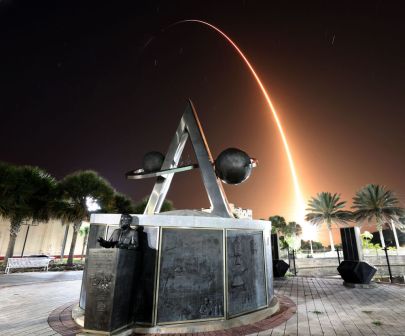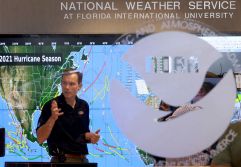Space, satellite, defense companies urge lawmakers to fund NOAA space commerce office

Seven industry organizations representing over 450 space, satellite, and defense companies are asking congressional appropriators to sufficiently fund an office within the National Oceanic and Atmospheric Administration that plays a key role in coordinating satellite traffic.
In letters shared with FedScoop, the associations called on leaders of the House and Senate appropriations subcommittees that oversee NOAA’s budget to keep the Office of Space Commerce at its current level of $65 million in fiscal year 2026. They also asked lawmakers to ensure OSC continues to get its funding for the current fiscal year.
“Without funding for space traffic coordination, U.S. commercial and government satellite operators would face greater risks — putting critical missions in harm’s way, raising the cost of doing business, and potentially driving U.S. industry to relocate overseas,” the associations wrote.
The letters follow a recent fiscal year 2026 budget justification document from NOAA that proposed reducing the space commerce office’s funding from $65 million to $10 million, cutting the number of employees, and eliminating its Traffic Coordination System for Space program, known as TraCSS.
That tool is being developed by the OSC as the result of a directive from President Donald Trump during his first administration and is intended to provide space situational awareness data to support safe spaceflight operations, per NOAA’s website. In June, it announced awards to eight companies for part of that program, and in May, it had announced an expanded agreement with SpaceX.
While the letter does not mention the TraCSS program by name, the organizations highlighted OSC’s importance for space traffic safety as well as continuity in space missions dealing with national security.
“One of OSC’s most important functions is to provide space traffic coordination support to U.S. satellite operators, similar to the Federal Aviation Administration’s role in air traffic control for the U.S. airline industry,” the organizations wrote. “Helping the U.S. space industry operate safely in an increasingly congested space domain ensures space-based services like broadband internet and weather forecasting are available to the American people.”
The organizations also said there is a risk that not funding OSC sufficiently would mean the space traffic coordination function reverts “to the Department of Defense despite longstanding U.S. policy favoring civil oversight.”
“Keeping space traffic coordination within the Department of Commerce preserves military resources for core defense missions and prevents the conflation of space safety with military control — critical to U.S. leadership in setting international standards and norms for space activities,” the organizations wrote.
The coalition of industry groups that signed the letters is the Aerospace Industries Association, American Institute of Aeronautics and Astronautics, Commercial Space Federation, Commercial SSA Coalition, National Security Space Association, Satellite Industry Association, and Space Data Association. Together, those associations represent companies including Northrop Grumman, Boeing, Amazon, Virgin Galactic, BlueOrigin, SpaceX and Maxar.
In an interview with FedScoop, Audrey Schaffer, vice president of strategy and policy for Slingshot Aerospace, which is one of the companies represented by the associations, said that while warnings for space traffic collisions have historically come from DOD, it’s not really equipped for that role.
“The Defense Department’s space situational awareness infrastructure is really built to focus in on potential threats,” said Schaffer, who was previously director for space policy on the National Security Council and a former space policy leader at DOD.
DOD’s role includes identifying, characterizing, and maintaining custody of the growing number of threats in space, she said. “It is not optimized to track tens of thousands of objects all of the time and to process vast amounts of data to provide the types of collision warnings that the satellite operator community needs today,” Schaffer said.
Slingshot Aerospace is also among the companies that have been awarded contracts to support the TraCSS program. That includes a $13.3 million award last year to develop the user interface for the tool and a more recent award to address an issue in space traffic coordination arising from lack of data on newly launched satellites known as the “COLA gap.”
Schaffer told FedScoop that the letter to lawmakers was partially to make them aware of the proposed decrease in funding and its impact. While there has been much focus on other cuts that affect the space industry, such as the nearly 25% proposed decrease to NASA’s total budget, she said the associations were concerned that the impact of the proposed reduction to OSC — which is a far smaller amount of money — hadn’t had much attention.
“Our effort here was intended to shine a light,” Schaffer said.
This story was updated July 8 to include additional detail on the companies represented and comments from an interview with Schaffer.






